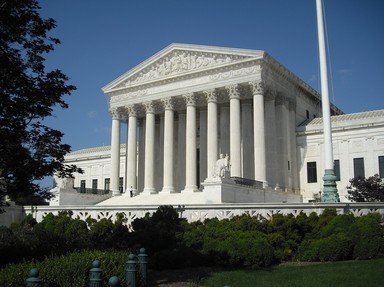Quiz Answer Key and Fun Facts
1. Which former Justice was in attendance for the oral arguments of Bush v. Gore (the Supreme Court case to "settle" the 2000 Presidential election)?
2. Through the end of the twentieth century, which Justice had the longest tenure on the Supreme Court?
3. Which Justice's father had been mayor of Cincinnati, Ohio?
4. Which of the following is true of Clarence Thomas?
5. Which Supreme Court case established the concept of judicial review by the High Court?
6. Which justice had a grandfather who was on the Supreme Court?
7. Who was the only Justice nominated by a Democratic President to dissent from the Roe v. Wade decision?
8. In which 1962 case did the Justices rule that the reading of a nondenominational prayer before the school day was unconstitutional?
9. What was the general idea behind Franklin Roosevelt's so called "court-packing" plan?
10. Who was one of the first two choices by President Ronald Reagan to fill the Supreme Court seat that eventually went to Anthony Kennedy?
Source: Author
PSURef21
This quiz was reviewed by FunTrivia editor
bloomsby before going online.
Any errors found in FunTrivia content are routinely corrected through our feedback system.
